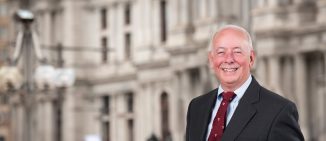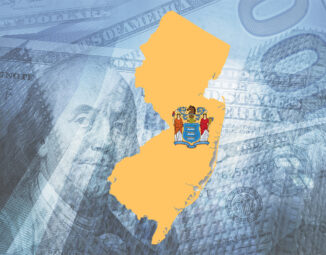Part II: Qualified Opportunity Fund Tax Benefits – Not Just For Real Estate Investors
This is Part II of a series of posts discussing the issues of Qualified Opportunity Funds (QOFs) that need to be considered when investing in non-real-estate-businesses. Part I of this series discussed the newest guidance for the 50% Gross Income Requirement for Qualified Opportunity Funds (QOFs). This Part II focuses on the very useful Working Capital Safe Harbor for QOF Businesses.
5% Limitation on “Nonqualified Financial Property”
QOFs may invest directly in a QOZ Business Property or in a QOZ partnership (or corporation) that operates a QOZ Business. To be a qualified QOZ Business, the trade or business cannot hold 5% or more of its property as “nonqualified financial property.”
“Nonqualified financial property” is generally defined as debt, stock, partnership interests, options, futures contracts, forward contracts, warrants, and other similar property. Fortunately, the term “nonqualified financial property” does not include “reasonable amounts of working capital held in cash, cash equivalents, or debt instruments with a term of 18 months or less (i.e., Working Capital Assets)”. Therefore, cash, cash equivalents, or debt instruments held by a QOZ Business for 18 months or less will not cause the QOF to violate the 5% limitation. Unfortunately, 18 months is generally not sufficient time for a business to properly analyze a project and completely expend its working capital.
Working Capital Safe Harbor.
The IRS recognizing this hardship and provided a Working Capital Safe Harbor for QOZ Businesses operated by QOZ partnerships (or corporations) in its October 2018 proposed regulations. In its April 2019 proposed regulations, the IRS specifically extended to the Working Capital Safe Harbor to include the development of a trade or business in the QOZ (i.e., operating businesses). Keep in mind, this Working Capital Safe Harbor is not available to QOZ Business Property that is owned directly by QOFs.
Under the Working Capital Safe Harbor, Working Capital Assets are treated as reasonable in amount if each of the following 3 requirements is satisfied:
- Written Expenditure Plan. The amounts of Working Capital Assets are designated in writing for the development of a trade or business in a QOZ.
- Written Schedule; 31 months. There is a written schedule consistent with the ordinary start-up of a trade or business for the expenditure of the Working Capital Assets, under which the Working Capital Assets must be spent within 31 months of the receipt of such assets by the trade or business.
- Actual Expenditure. The Working Capital Assets are actually used in a manner that is “substantially consistent” with the preceding two tests. However, this requirement may continue to be met if the expenditure of the Working Capital Assets is delayed by waiting for governmental action which was applied for within the 31-month period.
A business may benefit from multiple overlapping or sequential applications of this Working Capital Safe Harbor, provided that each application independently satisfies all of the 3 safe-harbor requirements. For example, a separate 31-month period will commence on the date of receipt of each sequential capital contribution.
Example #1.
The April 2019 proposed regulations provide two examples of non-real-estate start-up companies which satisfy the Working Capital Safe Harbor. In the first example, a QOF creates a subsidiary to open a fast-food restaurant and contributes cash to the subsidiary. The subsidiary prepares a written plan and a 20-month schedule for using this cash to establish the restaurant. Among the planned uses for the cash are (i) identification of favorable locations in the QOZ, (ii) leasing a building suitable for the restaurant, (iii) outfitting the building with appropriate equipment and furniture (both owned and leased), (iv) paying necessary security deposits, (v) obtaining a franchise and local permits, and (vi) hiring and training kitchen and wait staff. Undisbursed Working Capital Assets are eventually expended in a manner consistent with the plan and schedule.
Example #2.
In the second example, a QOF creates a subsidiary to start a new technology company and acquires subsidiary equity in exchange for cash. The subsidiary prepares a written plan (the Technology Plan) with a 30-month schedule for using this initial cash infusion to research and develop a new technology, including (i) paying salaries for engineers and other scientists to conduct the research, and (ii) purchasing and leasing equipment to be used in research and furnishing office and laboratory space. Approximately 18 months later, the QOF invests additional cash in the subsidiary, and the subsidiary prepares a second written plan (the Application Plan) with a 25-month schedule for the development of a new application of existing software, to be marketed to government agencies. Among the planned uses for the second cash infusion are paying development costs, including salaries for software engineers, other employees, and third-party consultants to assist in developing and marketing the new application to the anticipated customers. Undisbursed Working Capital Assets are eventually expended in a manner substantially consistent with both the Technology Plan and the Application Plan.
For more information or assistance in forming and structuring Qualified Opportunity Funds, please contact Warren W. Ayres at warren.ayres@obermayer.com or Pauline W. Markey at pauline.markey@obermayer.com.




